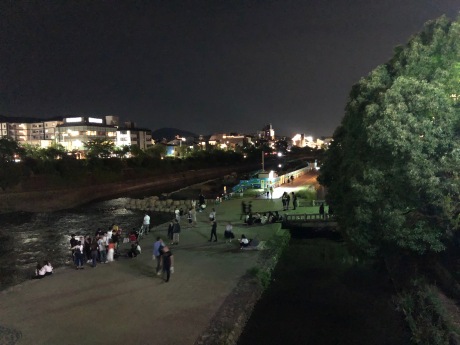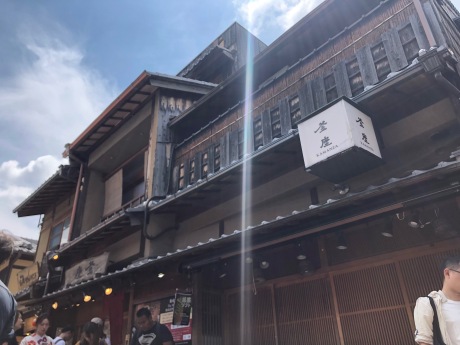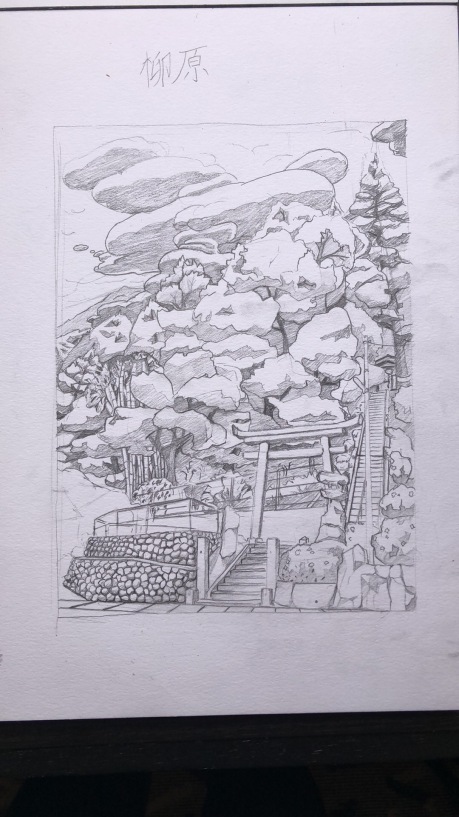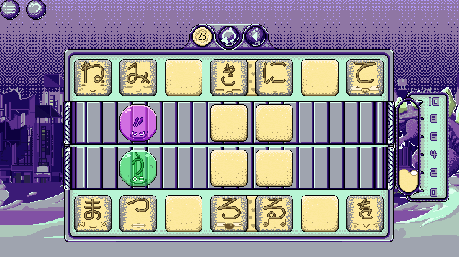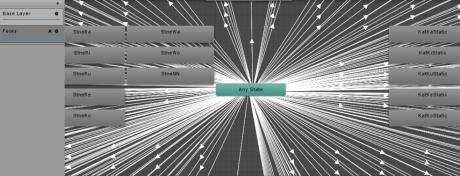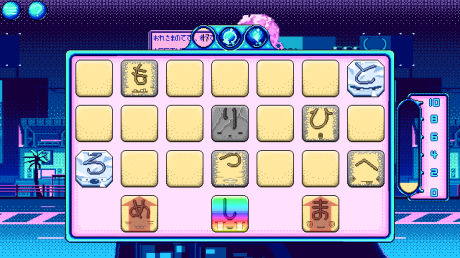Welcome back to the Kana Quest devblog! If you’re new here, welcome! I’m Theo, lead dev of Kana Quest. This is where I give you some insight into the process of making Kana Quest and things that I’ve learned along the way.
We took last month off due to us exhibiting at PAX Australia, but we are back! And this month we are going to be looking at PAX as the topic for this month. We are going to break it down into two chunks: How PAX went for Kana Quest, and secondly what is the process and logistics of attending PAX like?

How Did PAX Aus Go?
Well it started off a two weeks before PAX. Reuben (programmer) and I were trying to get the game running on iPad because we have access to two iPads. But alas no matter how hard we tried, we could not get the damn thing to build. See the problem for us was that we don’t have a mac. And you need one to build to iOS. And unfortunately for us, the mac we borrowed for the explicit purpose of building the iOS build was too old to update to the newest version of XCode. Basically this meant that we had to change plans on what hardware we would be bringing. So instead of two iPads, one Android tablet and a PC, we ended up going with three PCs and an android tablet.
Now we were setting up on the Thursday (night before pax), then Reuben and I get a message on the group discord from Julian one of our composers. He had been boldering and fractured his ankle. He was going to be coming down to help us exhibit, but alas that was no longer happening. So we had to frantically search for people to cover his shifts. Luckily I have good friends who rose to the occasion and I was able to cover the shifts pretty easily.

Once the actual convention started things went pretty well, people seemed to really like the game. We had lots of compliments on the art, and the actual gameplay. We had one nine year old girl play the game and she declared it “the best game ever” so I’ll count that as a win. I also had quite a few Japanese speakers enjoy the game too. I always love it when Japanese speakers enjoy the game because it means that the game part of Kana Quest stands on its own without needing any of the educational elements.
Another thing we did just before PAX was we finally got the Steam store for Kana Quest up. Valve has started putting games that are showing at big conventions at the front of the Steam store page, and we got a pretty good amount of wishlists over the course of the weekend. Speaking of which….. (shameless plug incoming)
https://store.steampowered.com/app/725850/Kana_Quest/
You can now wishlist Kana Quest on Steam. Please do if you like the look of it! (Ok shameless plug over)
And of course by the end of the weekend we were all completely dead on our feet and were very glad to go home and get some rest.
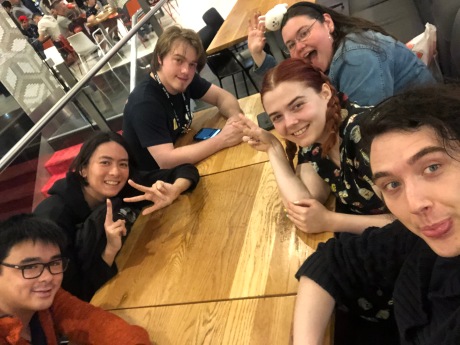
All of us getting desert on Sunday. Completely and utterly dead on our feet
What are the logistics of attending PAX Aus?
So, now we are going to get into the nitty gritty of what exhibiting involves and what you should you expect should you go.
The first thing you should know is it isn’t cheap. If you live in Australia and you haven’t done a convention before, I would not recommend PAX. I would recommend doing ACCon in Adelaide to get an idea of what you are in for first, but also to get feedback from people. If you have the following things, then PAX Aus is probably worth your time.
- Have $2000+ that you can spend on publicity.
- Have done a convention before.
- Have a team of at least 5-6 people who can help you exhibit.
- Your game looks polished, presentable and is mostly stable.
If you tick these boxes, then what you want to do is apply for the PAX Aus Indie Rising section once applications are opened. You will be asked to supply a build, a short video demonstrating gameplay, a summary of your game, and some screenshots. You will then, be likely receive a call or email from someone at ReedPop the organisers of PAX Australia. They will ask you some questions about your game like “is there nudity or high levels of violence in your game?”. If its a no on both counts, they should offer you a spot. You will then receive an invoice and you are on your way to PAX! Of course this is all under the assumption you get in before all the booths are sold. I did not get to exhibit in 2018 because I was too slow on applying.
Costs (everything here is in AUD)
Now let’s get into cost of things. The cost of your indie pod booth is about 1700$. This comes with two chairs, two exhibitor passes, booth art, and that is it. You need to bring your own screens, decorations, and furniture. I would also recommend getting at least one additional exhibitor pass ($125) just to allow the logistics of having people be on shift (we will get to the running of the booth later). Personally I don’t think you need to get additional furniture, unless you have a premium booth. So the cost of additional passes and the booth will come to a little under two grand. Not exactly pocket change.
But another thing you need to remember is that you will be spending money on food over the course of the weekend. And you will need to spend money on booth essentials (which I’ll talk about later). From experience this adds another $100-$300 depending on your needs.
So how can you, make these costs less painful?
Now if you are based in Victoria, Creative Victoria does offer a grant for $750 to help you show your game at PAX. If you live in Victoria, please apply for this. Having the cost of attending reduced by a third is such a big deal.
If you you don’t live in Victoria, the best thing you can do to reduce the cost of PAX is our next topic: Merch

Merchandise
Merch is probably going to be how you actually pay for your booth. In fact if you have good enough merch, you can end up making money at PAX. I heard on the grapevine that multiple games sold out of their merch, which resulted in PAX paying for its self. This is your goal with merch. Here are some good ideas for different types of merch.
- Clothing
- Pins (high quality enamel)
- Plush toys
Types of merch you don’t want to do.
- Stickers
- Stationary
- nick-knacks
The reason you don’t want to do stickers is that if someone uses your sticker somewhere in the convention hall, if it is easily traced back to you, the convention hall will fine you for it. It is not worth losing money over. And you don’t want to do anything too small like stationary or nick-knacks because they are easily lost, but also because of the numbers. You are only going to get so many people who love your game enough to buy merch (unless your merch is good enough on its own), you would rather those people buy something big and substantive that way you recoup your costs faster. Also, it means you can justify making the product of a higher quality. You want to be selling good quality things because you don’t want your potential fans thinking you sold them crap.
For this reason, really cool well made clothing works really well. Samurai Punk consistently has lots of people come and buy their shirts just because their designs are so cool. But you do need to make sure the design is good enough on its own. I did t-shirts in 2017, and they were a complete bust because the design wasn’t high enough quality.
Plush toys are really popular if you are able to get them made, but finding a place to get them made can be tricky. But because so few other games offer them, they stand out more. But if you don’t have any designs that would make a good plush don’t worry about it. We sold Kana Quest plushies in 2017, and they sold extremely well. My only regret is that we didn’t make enough. We sold out on the first day when we were selling them for $15. My sister made all the plushies by hand, so she very graciously made some more over night. Will raised the price to $25 for the rest of the weekend. The price hike slowed sales quite a bit. If we had made more to begin with we would have been able to justify selling them at the lower price throughout the weekend and we would have made way more money. I used a company called Neon Republic for my pins and they had a two month wait between ordering and delivery, so do take those times into consideration when considering pins.
Finally we have pins. I have never done official Pinny Arcade Pins, but from my understanding, if you do, you are gonna make bank. Now you don’t need to go through Penny Arcade to sell pins, but they wont be Pinny Arcade, so you will have to price much lower than the official pins. You also wont attract Pinny Arcade collectors, so you wont sell as many either. But I sold pins this year and we did really well for ourselves. It cost me $350 to have them made. I had two designs, of which I had 50 pins each. One design almost completely sold out, and the other sold about 30. I sold mine for $10 for the simple design, and $15 for the complex design (the cost of pins goes up, the more colours you add). At the end of the event I had made about $700 on the pins. Now one bit of advice I would give is try to use in game art over a logo for your pins. I had one pin of one of the Kana tiles, and one of the Kana Quest logo. Although the logo turned out much nicer, most people wanted the Kana tile because it didn’t specifically look like merch. It was just a cute generic looking pin that folks could put on without them looking like a brand shill.
The final thing to know about merch is that in Australia, you wont make money if you can’t take card. For international readers, a lot of Australia is cashless and a large number of convention goers will not have cash on them. Make sure you have a square space reader or something like that on you in addition to a well stocked lock box. And one small thing on this note, have a sign that says you take card. I forgot and I’m sure I lost sales because folks didn’t know I took card.
Booth Essentials
So what are some other things that you’re booth is going to need.
- Strepsils
- Gaffa Tape
- Double sided tape
- Scissors
- Cardboard (whatever colour will work with your booth), you will use this to make signs for…
- Availability on certain platforms, eg steam
- What merch you have available
- signs for selling the flavor of your booth
- any special deals your are offering for your game
- A pallet of bottled water.
- Antiseptic Gel
- Snacks
- Aspirin
- A sharpie
- Any other decorations you think you will need.
- A card reader
- Cashbox
- A keep cup (Epic games has comped the indie section with free barista coffee the last few years. Bring a keep cup so you can make the most use out of Epic’s generosity)
- Back up controllers/Mouse
- Business cards (about 400-600 of them from my experience, but if you have a more popular game than mine you might need more)
- Website
- Email
- relevant platform store links (eg. steam store link)
- Social media accounts
Bump In, and Bump Out.
So you will be allowed onto the show floor on Thursday. If you don’t have a high viability vest, you will need to buy one from the PAX people directly. Once you have one, you can enter. Your booth should have a key on the bench, this is what locks and unlocks the cabinet space under your booth. Do no lose it. I recommend getting in nice and early to set up. This means you have the most amount of time to change your mind about presentation, but it also means there probably wont be a long wait for the tag and test. Tag and test can often lead to looong wait times if you go in at the end of the day. I do not recommend.
On the topic of the tag and test. Every piece of electronic equipment that plugs into the power source has to be tagged and tested. If a cable is slightly damaged, it will not pass. They will not allow you to use it. Do not be caught out thinking you can use your laptop, only to find you can’t because a little bit of wiring is poking out. If you have a mouse, or a controller that plugs into a usb slot in your computer, you do not need that to be tagged and tested.
Once the tag and test is done, you can plug everything in. Test that your game build works on all the hardware. Ideally you will have done this a week beforehand but I have seen folks not test things and find they have to fix things when the show opens to the public.
That’s most of the information for bump in and bump out. Do it early, and don’t forget your high vis vest.
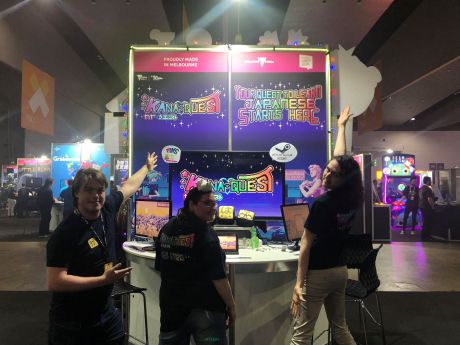
Manning The Booth
So at the start of this section I said that you need about 5-6 people to help you. This is because you need to give people breaks. Pax is a loud environment in which you will be doing a lot of talking, standing and trying to create an inviting environment for your booth. For this year we had 4 people at the convention centre at all times, two people would man the booth at once, the other two would be on break. The exception being if it gets really really busy, or someone at the booth needs something (eg food). We also worked in 1 and a half hour shifts, changing one person every 45 minutes. I also gave everyone but myself a day in which they did not have to man the booth at all. This is good because it meant that folks got a chance to see the show, but also relax without having to worry about any of that booth stuff.
While you are manning the booth, feel free to ask people if they would like a go. But do read their body language. If they are closed off, don’t bother them. If they look interested go for it. For example I would often say “would you like to learn some Japanese?”. This is a nice easy yes or no question. If they say yes, invite them to play. If they say no, wish them a good day. Don’t push them to play your game. Lots of folks just walk through the indie section, find the games with art they like the look of and save them. They wont stop and play, even for a game they think they’ll love. Do not pressure those folks to play, as you will sour the game to those people by you not respecting their boundaries.
I also find its good to have a handful of business cards on you. People often pass through and will just ask you for a card. I do find a card is better than a pamphlet, as cards slip easily into pockets whereas a pamphlet is has to be put into a show-bag or get scrunched up.
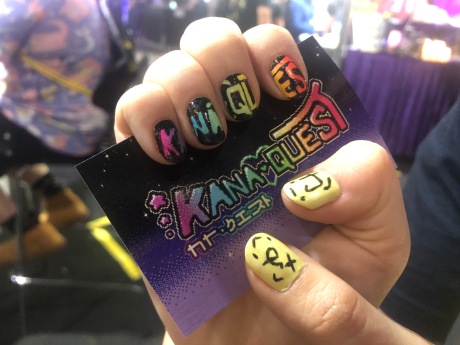
What to Expect Day to Day
Friday is your quietest day. Because of this the press are most likely to play your game on this day. The press also get let in an hour before the general public. This is why you really should have your booth set up on Thursday. If you are still setting up on Friday, press will pass you by. If a member of the press plays your game they will often come back for a proper interview later. Another thing to remember about Friday is, if there is anything you really want to do on the show floor, today is the day to do it. Do not wait till the weekend. You will have no hope.
Saturday: pray to whatever deity your worship, and hope you receive mercy. I’m being dramatic, but this is going to the busiest day. There are going to be SO many people. Stay hydrated. Take your breaks. And pace yourself.
Sunday is busier than Friday, but its not as out of control as Saturday. Often press will come back to you to record interviews on this day. Things will also close a bit sooner so you can bump out. The last thing is, on Sunday evening there is Megadev. It is the game developer mega party at the end of Melbourne International Games Week. If you want to go, ask around the other game devs in the indie section to see if they are going. If they are, ask them for the code. They will only give it to you if you are a game dev. Once you have it you can purchase at ticket on the Megadev trybooking page. It does cost a bit of money though, and I think you only get 1 drink token from memory. I personally don’t enjoy it as by this point in time, I am done with loud, crowded spaces from PAX. But if you want to get sloshed with a bunch of game devs, this is where you want to do it.
Monday: TAKE THE DAY OFF. Take the week off. I’m not kidding, taking the week off is a good idea. You will be absolutely wrecked afterwards. Now is the time for self care. You will also probably get sick here, so have fun with that.
Wrapping Up
That’s basically all the information I’ve learned over the course of doing this thing two times now. I hope this was informative. If you have exhibited at PAX Aus, feel free to drop your handy hints in the comments.
And if you like the look of Kana Quest, or you felt this blog was useful to you please consider …
Wishlisting the game on Steam: https://store.steampowered.com/app/725850/Kana_Quest/
Following the Official Kana Quest Twitter: https://twitter.com/KanaQuest
Or liking Kana Quest on Facebook: https://www.facebook.com/KanaQuest/




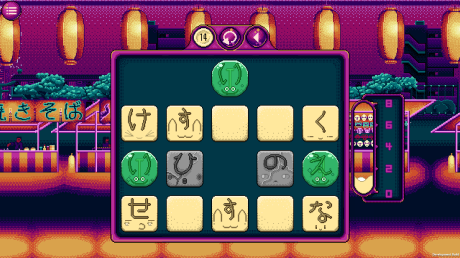




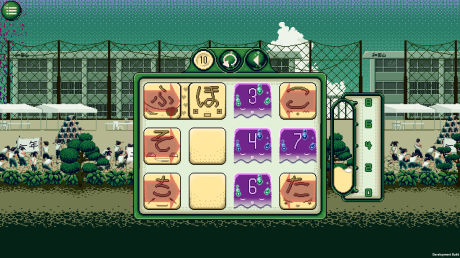











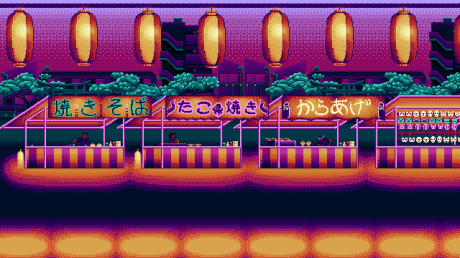

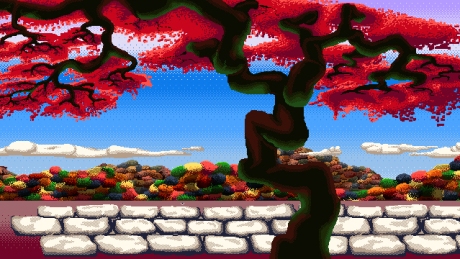






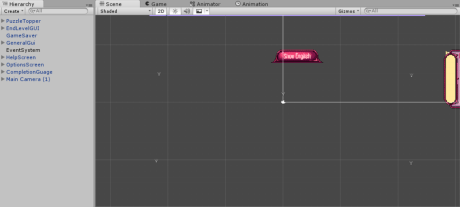













 So I tried to exhibit at Bitsummit this year, and unfortunately I was not successful. But I did decide that it would be worth heading over there and meeting some new people, playing some sweet new games, and learning some new things. I do want to give a shout out to Andrew (@DigDugpa), Shawn (@auberginenasu) and Lena (@Crowbeak) who took took me under their wing and introduced me to folks. The show was really cool and there were some really sweet games, and there was a surprisingly large amount of Aussie devs there. There was
So I tried to exhibit at Bitsummit this year, and unfortunately I was not successful. But I did decide that it would be worth heading over there and meeting some new people, playing some sweet new games, and learning some new things. I do want to give a shout out to Andrew (@DigDugpa), Shawn (@auberginenasu) and Lena (@Crowbeak) who took took me under their wing and introduced me to folks. The show was really cool and there were some really sweet games, and there was a surprisingly large amount of Aussie devs there. There was 
